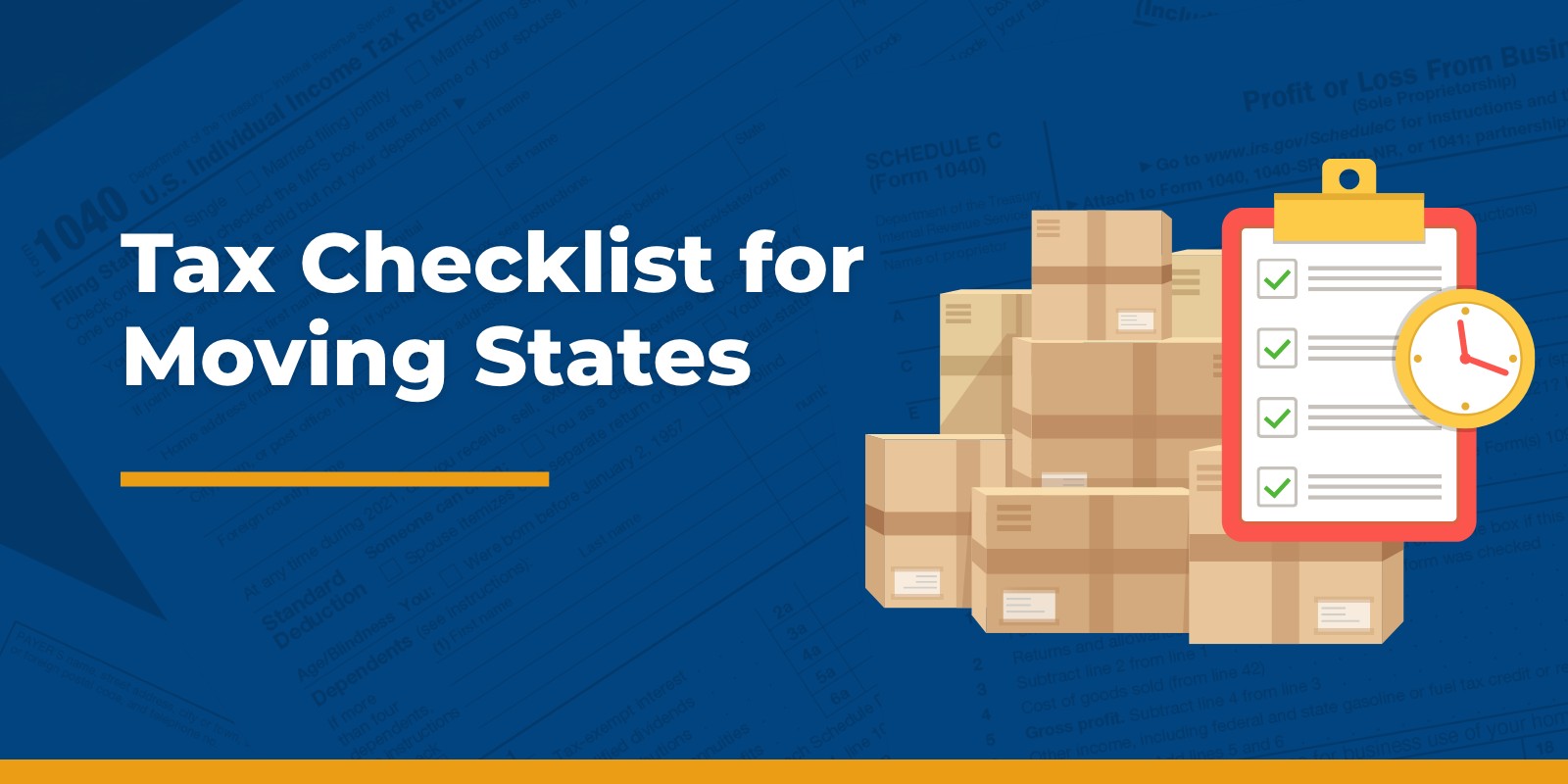Cryptocurrencies are a brand-new asset class that has taken the world by storm since Bitcoin first crossed the $1,000 mark in 2017. Recent price weakness is giving investors another chance to add cryptocurrencies to their investment portfolios.
We have written this guide to demystify the world of crypto and to help you start investing in cryptocurrency while minimizing the risks.
What Exactly Is Bitcoin and Blockchain?
Bitcoin is a good place for a primer on cryptocurrencies to start. Bitcoin was the first cryptocurrency, and most other crypto assets and blockchains are variations on the original principle. If you understand the basics of Bitcoin, you will find it easy to understand other crypto assets and networks.
Bitcoin is a decentralized cryptocurrency that exists on a decentralized ledger known as a blockchain. Every Bitcoin transaction and the number of Bitcoins held by each address is recorded on the blockchain. A Bitcoin address is like an account at a bank and tells us who owns what.
The blockchain is updated by “nodes” which are computer programs that store and process transactions. Bitcoin is decentralized, so anyone with enough computing power can download the software and run a node. Nodes that process new transactions are known as “miners”, and these nodes are rewarded with newly “mined” Bitcoin when they add transactions to the ledger. Transactions are added to the blockchain in batches, or “blocks” of around 1,700 transactions.

Mining nodes solve cryptographic problems to “win” the right to update the next block. The transactions they add to the blockchain also need to match the transactions proposed by more than 50% of the other nodes. This ensures there is always consensus and prevents double spending and fraud. When the first block was mined, the reward was fifty Bitcoins – but this figure is halved every few years and is now down to 6.25 coins per block. Approximately 144 blocks of transactions are processed each day.
Bitcoin and the Bitcoin network were launched in early 2009 by Satoshi Nakamoto, the actual identity of whom remains a mystery. Nakamoto mined the first block on January 3rd, 2009 and created the first 50 Bitcoins. As of February 15th, 2022, the ledger is on block 723,467 and 18.9 million Bitcoins have been mined.
What Is the Value of Bitcoin?

Bitcoin does not have an intrinsic value like other assets do, as it does not generate cashflow or profits. However, supply is limited. There are only 18.9 million Bitcoins in existence so far, with just 900 new coins being added each day. The block reward will continue to halve until there are 21 million Bitcoins at which point no more Bitcoins will be created.
If supply is limited, and demand rises, the price must rise until supply and demand are in equilibrium. So, the price of Bitcoin really comes down to demand. The limited supply is one of the factors that differentiates Bitcoin from conventional currencies, also known as fiat currencies. These currencies are controlled by central banks, and the supply can be increased at any time, which causes inflation.
When Bitcoin was launched, few people knew about it and there was very little demand. This is the reason it took six months for the price to reach just 9 cents, and another four years to reach $100. However, demand grew as more people learned about Bitcoin, and the rising price supported the case for investing. Most of the demand for Bitcoin comes from traders, speculators, and investors. These sources of demand are very sensitive to sentiment.
But there is also an important use case: transferring value. Individuals, FinTech platforms and institutions can “use” Bitcoin as a method to cheaply and quickly transfer value from one entity to another. This is important as this type of demand is not influenced by sentiment.
In the past, it was retail investors that accounted for most of the demand for Bitcoin. However, this is beginning to shift to institutions and FinTech platforms. Ultimately, if demand for Bitcoin continues to rise, the price will likely rise over the long term – though there will of course be peaks and troughs along the way.
Ethereum and Decentralized Applications

By now you should have a basic idea of what Bitcoin is. Ethereum, or Ether, was the 18th digital coin to be launched, and it is now the second most valuable cryptocurrency, and possibly the most interesting of them all. The Ethereum network is an example of a network that added entirely new use cases to the concept behind Bitcoin and the blockchain.
Ethereum’s blockchain isn’t just a ledger for transactions involving Ether. Autonomous applications can also run on it, which makes it like a massive, decentralized supercomputer. These applications are governed by “smart contracts” that also reside on the network.

The Ethereum network creates an environment where DApps (decentralized applications) consisting of software and smart contracts can operate on the network without the control of any single entity. Examples of DApps that can run on the network include games, marketplaces, and exchanges.
The key difference between a DApp and any other application is that the DApp is not hosted on a centralized server, and it is not controlled by any single entity. The Ethereum network effectively rents processing power to the DApp by charging transaction fees. DApps can in turn charge users for access to the application, or a transaction fee. In fact, DApps can issue their own digital coins to fuel their own platform economy.
Networks like Ethereum allow for entirely different types of applications and organizations. This means businesses, platforms and software can exist and be directed by a community of users and developers, rather than by shareholders or a traditional management structure.
Example: Decentralized Applications (DApps)

Cryptocurrencies are traded on exchanges. These exchanges are either centralized or decentralized, with the latter being a good example of a DApp. Coinbase is an example of a centralized exchange. The platforms (there are several) are owned by a company. Like most companies, Coinbase has a management team, staff, offices, equipment and expenses to pay.
A decentralized exchange (DEX) is a DApp that exists as software and smart contracts on a blockchain like the Ethereum network. This means a DEX avoids many of the costs a centralized exchange would incur.
A DEX, and most other DApps, will typically have its own token, which is required to access the platform, pay fees, or even to buy and sell other virtual currencies on the exchange. DApps like this are usually set up by a team of developers who are incentivized to add value to the platform, thereby increasing the value of its native token.
Types of Digital Assets

There are no “official” categories for cryptocurrencies, but we can classify them according to their primary use. In many cases, virtual currencies can have multiple use cases that give them value.
- Crypto coins – The first group of digital assets are those that primarily act as a medium of exchange (MOE) or a store of value (SOV). This group includes Bitcoin, Bitcoin Cash, and Litecoin. This category could be referred to as pure cryptocurrencies, coins, or digital currencies.
- Utility tokens – Networks like Ethereum and DApps can issue their own tokens which are required to access the service. These types of tokens are sometimes described as utility tokens as they provide their owners with utility. However, these tokens can act as an MOE or SOV too – as is the case with Ethereum. The term altcoin is used in various ways. Sometimes it may refer to any cryptocurrency that isn’t Bitcoin.
- Stable coins – There’s no denying the fact that most cryptocurrency prices are volatile. Stable coins are cryptocurrencies that are designed to have very low volatility. Most are backed by the US dollar and their prices are typically close to $1 at all times. Other stable coins use a system of collateral to reduce volatility. Stable coins offer crypto investors a place to keep their capital in the ecosystem while diversifying into less volatile assets. They also facilitate trading on decentralized exchanges which can’t accommodate trading in fiat currencies. Tether (USDT), USD Coin (USDC) and Binance USD (BUSD) are the leading stable coins.
- Non-fungible tokens – NFTs are unique items that can be stored on a blockchain. By storing a digital asset on a blockchain, its ownership, ownership history, and authenticity can be verified. See below to learn more about NFTs.
- Asset backed tokens – Asset backed tokens are digital tokens that are backed by real world assets like real estate, commodities and stocks. This is a grey area for cryptocurrency markets as the link between a blockchain and a real asset is dependent on the legal system. There has been limited progress in this area, but it holds potential for the future. In theory, all financial market assets and real estate could eventually reside on a blockchain.
What Is DeFi?

DeFi stands for Decentralized Finance, an emerging and alternative financial system. DeFi applications aim to use blockchain technology to replace the intermediaries that traditionally act as middlemen for financial transactions. Other DeFi applications are designed to solve challenges unique to the crypto industry. Some examples of DeFi applications include:
- Decentralized exchanges
- Peer-to-peer lending
- Yield farming
- Insurance
- Synthetic assets and derivatives
- Providing liquidity
- Stable coins
DeFi applications typically operate on the Ethereum network and rely on smart contracts for governance.
Example: DeFi

BlockFi is a well-known DeFi platform that provides users with several services. Besides a wallet and trading platform, BlockFi offers users several ways to earn a yield on their crypto assets.
In addition, you can apply for a Bitcoin credit card. This allows you to spend money against your Bitcoin holdings and earn 1.5% back on each purchase. BlockFi also provides loans using crypto assets as collateral. This means you can borrow money while continuing to hold your digital currencies.
Prominent Cryptocurrencies

Bitcoin (BTC) and Ethereum (ETH) are the dominant cryptocurrencies and together account for over 60% of the total market value of all cryptocurrencies. The following is a list of other prominent and interesting cryptocurrencies. This list is by no means complete or a list of recommendations. For a complete list of crypto assets have a look at the CoinMarketCap website.
- Binance Coin (BNB) is the native token for Binance, which is a major cryptocurrency exchange. Binance Coin resides on the Binance Chain blockchain and is used to pay for various services on the platform.
- Ripple (XRP) is a payments network designed for interbank payments. XRP is the token used to transfer value between entities. XRP does not run on a blockchain but on a network of servers controlled by banks, so some believe it is not a true cryptocurrency.
- Polkadot (DOT) is a protocol designed to act as a bridge between other blockchains. Developers can also use Polkadot’s chain to create their own blockchain that inherits features from the Polkadot chain.
- Cardano (ADA) is similar to Ethereum in that it allows for DApps and smart contracts to run on the network. The Cardano network uses proof of stake (POS) rather than proof-of-work (POW) to validate transactions.
- Litecoin (LTC) was one of the earliest cryptocurrencies and was designed to improve on certain aspects of the technology behind Bitcoin. Like Bitcoin, Litecoin is primarily a store of value and medium of exchange.
- Solana (SOL) is another popular blockchain for developers to build DApps on. Solana is similar to Ethereum in many ways but boasts faster processing speeds and lower transaction fees.
- Uniswap (UNI) is a protocol that facilitates transactions between different cryptocurrency tokens. UNI is the native token used to transact on the network.
- Monero (XMR) is a cryptocurrency with a focus on privacy. Monero is one of the oldest digital coins on this list and was designed so that transactions on the network cannot be traced.
- IOTA (MIOTA) is a blockchain designed for the internet-of-things. Developers can use it to build applications that allow devices to communicate and make micropayments to one another.
- Stellar (XLM) is a decentralized network that facilitates the transfer of value between fiat and digital currencies. Lumens are the tokens used to transact on the network.
How to Invest in Cryptocurrency
Before you can invest in a cryptocurrency, you will need a wallet to store your digital assets. You will also need to choose an exchange or broker to trade with.
Cryptocurrency Wallets, Public and Private Keys

Each address on a blockchain consists of a public and a private key. The public key is the address someone would use to send bitcoin or another digital asset to you. The private key is like a password that you need if you want to send your Bitcoin to another address.
A wallet is used to access your cryptocurrencies and keep them safe. You don’t actually store your digital assets in the wallet as they only really exist on their respective blockchains. Instead, the wallet is used to store your public and private keys, and to interact with the blockchain. Most people use software wallets like the Coinbase Wallet or MetaMask. You can also use hardware wallets like Ledger which are not connected to a computer and add an extra level of security.
Some wallets can be used with multiple crypto assets, while others are only compatible with a specific cryptocurrency. When you set up your wallet, make sure you follow the instructions carefully to ensure that you do not lose your private keys.
💡 Note: If you trade on some centralized exchanges like Coinbase, you do not need to have a wallet as the exchange operates more like a stock broker. You already have a wallet included with your account on the exchange. You can however send your coins to your own wallet.
Crypto Exchanges, Brokers and Apps

You can buy and sell cryptocurrencies on various different types of platforms. These include:
If you are making your first Bitcoin transaction, the choice of platform probably won’t make a big difference. However, in time you may prefer an exchange that better suits your needs. Active traders and serious investors prefer to trade on exchanges as the fees are lower than they are for brokers and other platforms.
Decentralized exchanges are more complicated to work with, so they are probably best avoided until you are comfortable with the crypto market. Exchanges for digital assets vary widely in terms of the coins you can trade, the fiat currencies you can fund an account with, and account funding methods.
Non-Fungible Tokens

NFTs are the latest type of crypto asset to capture the world’s attention. Assets like Bitcoin and US dollars are fungible as each unit is exactly the same as every other unit. NFTs represent assets that are not identical to any other assets, and so non-fungible.
The NFTs that gained popularity in 2021 were mostly digital artworks and copies of tweets, which exist as jpeg files. These NFTs are individual blockchain tokens that includes information like the name of the creator, the creators signature and the date the NFT was minted. The media file itself cannot exist on a blockchain, but the NFT will usually include a hyperlink to the asset itself.
These types of NFTs allow artists to monetize their artworks, and allow ownership to be authenticated. This is important for digital art (images, audio and video) that can easily be copied. But there are also lots of reasons to be somewhat skeptical about these types of NFTs. Although the individual NFTs are unique, there is no limit to the number of NFTs like this that can be produced. Many of these artworks are computer generated, and one collection can include thousands of artworks.
In addition, an NFT may give official ownership of an artwork to one person, but that doesn’t stop anyone else copying it. The earliest NFT artworks may well retain some value due to the fact that they were the first to be minted. NFT’s like the signed copy of Jack Dorsey’s first tweet should also retain value due to their rarity.
However, it’s difficult to find a reason for millions of other NFT jpegs to retain any value if they have no utility. When an NFT has utility, it becomes a different story. The real potential for NFTs becomes apparent when they give their owner utility.
Example: NFTs With Real World Utility

An example of an NFT with utility is Bored Breakfast Club. This is a collection of 5,000 NFTs that come with a free coffee subscription. NFT holders will have unique coffee blends delivered to them, wherever they are in the world, for free.
The NFTs include a digital image of a breakfast scene made up of 200 individual traits. The artworks are inspired by the popular Bored Ape Yacht Club NFT collection. NFT ownership comes with the right to receive free, unique coffee blends roasted by Yes Plz Coffee. If an NFT is sold, the right to receive coffee transfers to the new owner.
Initially, NFT holders will receive two bags of coffee, spread out over a two-month period. After that, shipments will be made when there are enough funds in a community fund, the Community Coffee Wallet. This community wallet is funded by royalties on NFT sales in the secondary market like OpenSea, coffee sales and merch sales.
More NFT Use Cases

The Bored Breakfast Club is a good example of the potential for NFTs. In this case, the NFT and artwork are really a ticket that provide access to a subscription service.
There are lots of other potential use cases for NFTs, with many of them tying in with the emergence of Web3 and the Metaverse. NFTs are already starting to make an impact in digital worlds like video games. For years, objects in these virtual worlds have been traded for real money. NFTs create a mechanism to do this securely, and to transfer digital assets between digital environments.
As the Metaverse evolves, unique digital assets will become more important, ubiquitous and valuable. These could include digital real estate, avatars and access passes. NFTs are a compelling way to authenticate ownership of these assets. There are also several compelling real word use cases for NFTs. One example is event tickets which are often the subject of fraud and scams. If event tickets are issued as NFTs, they cannot be illegally sold or copied.

NFTs can also be used to protect intellectual property including images, music, videos and software. They can be used to track and pay royalties to creators. Creators can also sell their work as an NFT with additional utility. As an example, a musician could sell an album as an NFT that also gives the holder free entrance to future concerts.
Apart from these examples, NFTs can be used to track items with supply chains, to authenticate documents and credentials, and for vehicle licensing. As you can see there is a lot more to the potential for NFTs than digital art. In the future even more use cases are likely to emerge as the digital economy evolves. In fact, NFTs and asset backed tokens could become an essential link between digital and physical worlds.
7 Ways to Make Money From Cryptocurrencies
There are lots of different ways to make money in the crypto and blockchain industry.
- Direct Cryptocurrency Investments
- Cryptocurrency Derivatives
- Non-Fungible Tokens
- Yield Farming and P2P Lending
- Cryptocurrency Mining
- Cryptocurrency Funds
- Cryptocurrency Stocks
1. Direct Cryptocurrency Investments

The first and obvious option is to build a portfolio of cryptocurrencies, or to trade them actively.
2. Cryptocurrency Derivatives
You can now trade futures and options on Bitcoin and Ether on several exchanges including the world’s largest financial derivatives exchange, the Chicago Mercantile Exchange (CME). A lot of brokers now offer CFDs (contracts for difference) on a range of cryptocurrencies.
Derivatives like futures, options and CFDs, allow you to trade with leverage and to open short positions on cryptocurrencies like Bitcoin. However, with all the crypto market volatility we would advise you to be very cautious about trading with leverage.
3. Non-Fungible Tokens (NFTs)

As mentioned, the NFT market is still evolving so there should be plenty of different opportunities to invest in the future.
4. Yield Farming and P2P Lending
Some cryptocurrencies can pay you interest. Generally this involves lending your coins to a miner or validator to help them increase their stake. The validator then shares the rewards they earn for validating transactions. This process is known as yield farming. Peer-to-peer lending is another way to earn interest on your crypto assets.
5. Cryptocurrency Mining

Crypto mining is not as easy as it used to be as the costs of doing so have risen dramatically. Nevertheless it can still be profitable if you go about it the right way. The barriers to entry are lower if you invest in a cloud mining pool. However, these mining pools need to be investigated thoroughly. In general, you should develop a good understanding of the industry before diving into mining.
6. Cryptocurrency Funds
It is possible to invest in the largest cryptocurrencies using a stock trading account. There are three types of crypto funds that can be traded on the stock market.
The first of these is ETFs (exchange traded funds). It has taken a long time for crypto ETFs to receive regulatory approval – and there’s still a long way to go. At this stage, the only Bitcoin ETF in the US holds Bitcoin futures rather than Bitcoin itself. This fund is the ProShares Bitcoin Strategy ETF (NYSE: BITO).
The second type of funds are ETNs (exchange traded notes). These differ from ETFs in that the assets are not held in a trust, but on the balance sheet of the issuer. ETNs offer more flexibility than ETFs, but come with some counterparty risk. Most of the cryptocurrency ETNs are listed in Europe. Examples include the VanEck Bitcoin ETN (listed in Germany) and the 21Shares Ethereum ETP (listed in Switzerland).

The third type of funds are closed end listed investment trusts. These are similar to ETFs, but have a fixed number of shares in issue. This means that the price is dependent on supply and demand and can vary substantially from the value of the underlying assets.
The Grayscale Bitcoin Trust (US OTC: GBTC) is the best-known closed end crypto fund. This fund traded at a large premium to the NAV for years, but is now trading at a discount. Grayscale also manages various other single coin funds and two multi coin funds.
7. Cryptocurrency Stocks
There are also quite a few publicly listed companies that derive all or some of their earnings from cryptocurrencies or the blockchain industry. The companies listed below are involved directly in crypto mining, or hold substantial digital assets on the balance sheet.
- MicroStrategy Incorporated Class A (NASDAQ: MSTR)
- Riot Blockchain Inc (NASDAQ: RIOT)
- Marathon Digital Holdings, Inc. (NASDAQ: MARA)
- HIVE Blockchain Technologies Ltd (TSXV: HIVE)
- Galaxy Digital Holdings Ltd (TSX: GLXY)

There are also lots of companies, including Nvidia, CME Group, Block (Square) that offer partial exposure to the industry. You can also invest in several ETFs that invest in companies involved in blockchain technology and cryptocurrencies. Examples include:
- Amplify Transformational Data Sharing ETF (NYSE Arca: BLOK)
- First Trust Indxx Innovative Transaction & Process ETF (NASDAQ: LEGR)
- VanEck Digital Transformation ETF (NASDAQ: DAPP)
How to Evaluate a Cryptocurrency or Crypto Project

Investing in cryptocurrency should be approached with caution. While the most successful cryptocurrencies have generated massive returns for early investors, they have also exhibited extreme volatility. In addition, countless cryptocurrencies have seen their prices decline with little chance of recovery. There are now over 5,000 cryptocurrencies to trade, but there probably isn’t room for nearly that many digital currencies.
For long-term investors, sticking to the largest coins has proved to be a winning strategy. This doesn’t mean that a new or small project can’t succeed, but the chances of failure are a lot higher for small projects. Unfortunately, the crypto market has also become a platform for scams, fraud and money laundering – see below. Whether you are investing in tokens, NFTs or any other crypto asset, you should carefully evaluate each project. This will become even more important as the market matures.
First of all, it’s important to make a distinction between trading and investing. Trading is short term in nature and based entirely on supply and demand. As long as demand for an asset remains strong, a short-term trade can be profitable regardless of the long-term viability of the asset.

If you are investing, which typically means for six months or longer, you will need to look beyond current market hype. As an investor, you should be considering the value of the asset and how that may change over time. Digital assets may not have an “intrinsic value” but there are factors that affect their perceived value. The technology and use case behind a crypto project are obviously important, but you should also consider the following:
- Sustainable demand – For any asset to appreciate over time, their needs to be sustainable demand for that asset. Ideally demand should come from multiple sources – including users – and not just from speculators.
- Community – Community strength has emerged as an important indicator of the success of crypto projects. Hype doesn’t guarantee success, but a project that can’t build up a following is likely to struggle regardless of its other attributes. Community strength is especially powerful when it is “organic”, and not paid for with giveaways, paid media coverage etc. Bitcoin and Ethereum do not have marketing departments – instead they rely on a community of users and developers to spread the word.
- Competitive advantage – For any coin to succeed, there needs to be a clear competitive advantage. A lot of Bitcoin’s success can be attributed to the fact that it was the first and has always been the most valuable. For Dogecoin, the fact that Elon Musk likes it is a huge advantage.
- Incentives – Another important aspect of a project is the way incentives are aligned between various stakeholders. During the ICO (initial coin offering) craze of 2017, project founders were often incentivized to sell out and leave the project, rather than see the plan through. If incentives are aligned, there is more chance that the community will work together.
How to Avoid Cryptocurrency Frauds

Various types of scams and frauds are becoming increasingly common in the crypto space. This is often the case with new industries that are not fully regulated and have new projects popping up every day. You can reduce the risk of becoming a victim of scams, cybercrime and fraud by following these guidelines:
- Make sure the people behind a project are real. Try to find their social media profiles and make sure there is a history and more than a few connections. A reverse image search on Google will usually tell you very quickly if someone’s identity is fake.
- Don’t leave large amounts of digital assets in an exchange account. Use a hardware wallet for extra security if you have more than 10% of your assets in crypto.
- Be very careful with any hyperlink you receive via email, via Discord or in a chat room. Phishing scams often use websites that look very real to trick people.
- Likewise, be careful with anything that appears to be free or too good to be true.
- In general, stick to coins, projects and exchanges that are established and well documented. The smaller or less well known a project is, the more skeptical you should be.
Conclusion
This guide to cryptocurrency investing is just a starting point, but hopefully it has given you a good foundation for further research. We should probably still regard cryptocurrencies as speculative investments. However, the physical and digital economies are beginning to converge.
Cryptocurrencies and blockchain technology are an essential building block for the economy of the future – which means they shouldn’t be ignored either. What are your thoughts on investing in cryptocurrency? Do you think that at some point all assets will be tokenized? What is your favorite cryptocurrency or NFT any why? Let us know in the comments below.
Publisher: Source link











